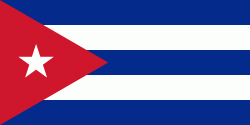Matanzas (Municipio de Matanzas)
Matanzas is called the City of Bridges, for the seventeen bridges that cross the three rivers that traverse the city (Rio Yumuri, San Juan, and Canimar). For this reason it was referred to as the "Venice of Cuba." It was also called "La Atenas de Cuba" ("The Athens of Cuba") for its poets.
Matanzas is known as the birthplace of the music and dance traditions danzón and rumba.
Matanzas was founded in 1693 as San Carlos y San Severino de Matanzas. This followed a royal decree ("real cédula") issued on September 25, 1690, which decreed that the bay and port of Matanzas be settled by 30 families from the Canary Islands.
Matanzas was one of the regions that saw intensive development of sugar plantations during the colonial era. Consequently, many African slaves were imported to support the sugar industry, particularly during the first half of the nineteenth century. For example, in 1792 there were 1900 slaves in Matanzas, roughly 30% of its population. In 1817, the slave population of Matanzas had grown to 10,773, comprising nearly 50% of the overall population. By 1841, 53,331 slaves made up 62.7% of the population of Matanzas. Census figures for 1859 put the Matanzas slave population at 104,519. Matanzas was the site of several slave insurrections and plots, including the infamous Escalera conspiracy (discovered in late 1843). Due to the high number of both slaves and, importantly, free Afro-Cubans in Matanzas, the retention of African traditions is especially strong there. In 1898, Matanzas became the location of the first action in the Spanish–American War. The city was bombarded by American Navy vessels on April 25, 1898, just after the beginning of the war.
Map - Matanzas (Municipio de Matanzas)
Map
Country - Cuba
 |
 |
| Flag of Cuba | |
The territory that is now Cuba was inhabited by the Ciboney people from the 4th millennium BC with the Guanahatabey and Taíno peoples until Spanish colonization in the 15th century. From the 15th century, it was a colony of Spain, and slavery was abolished in 1886, remaining a Spanish colony until the Spanish–American War of 1898, when Cuba was occupied by the United States and gained independence in 1902. In 1940, Cuba implemented a new constitution, but mounting political unrest culminated in a coup in 1952 and the subsequent dictatorship of Fulgencio Batista, which was later overthrown in January 1959 by the 26th of July Movement during the Cuban Revolution, which afterwards established communist rule under the leadership of Fidel Castro. The country was a point of contention during the Cold War between the Soviet Union and the United States, and a nuclear war nearly broke out during the Cuban Missile Crisis of 1962. Following the collapse of the Soviet Union, Cuba faced a severe economic downturn in the 1990s, known as the Special Period. In 2008, Fidel Castro resigned after 49 years of leadership of Cuba and was replaced by his brother Raúl Castro.
Currency / Language
| ISO | Currency | Symbol | Significant figures |
|---|---|---|---|
| CUC | Cuban convertible peso | $ | 2 |
| CUP | Cuban peso | $ | 2 |
| ISO | Language |
|---|---|
| ES | Spanish language |















